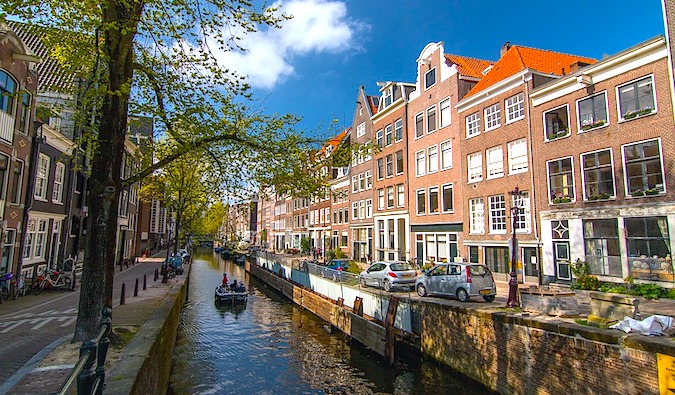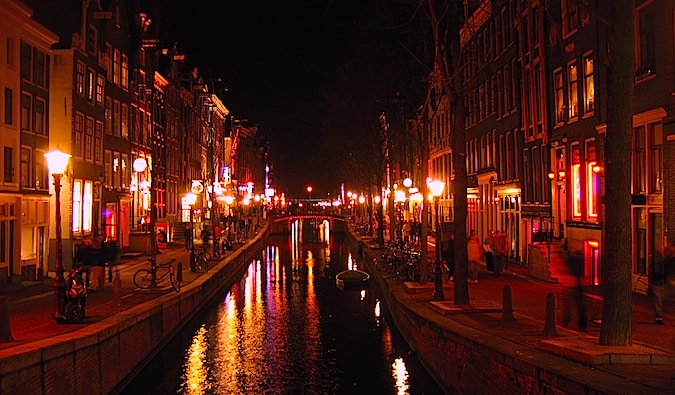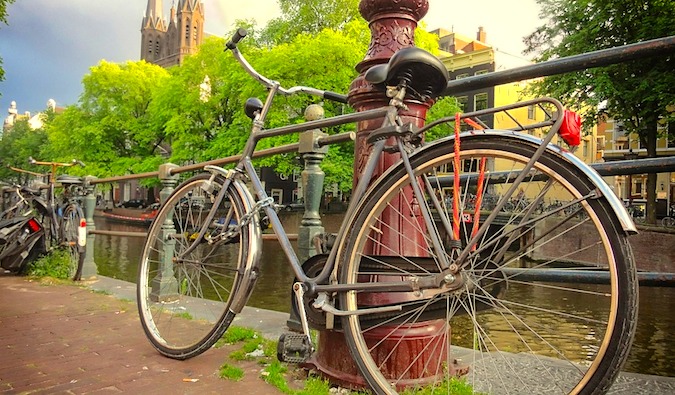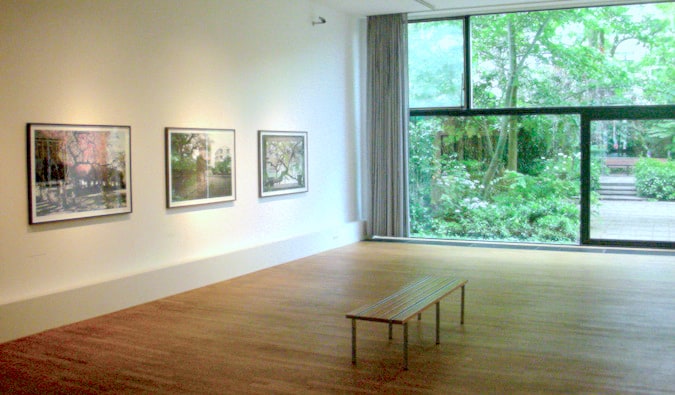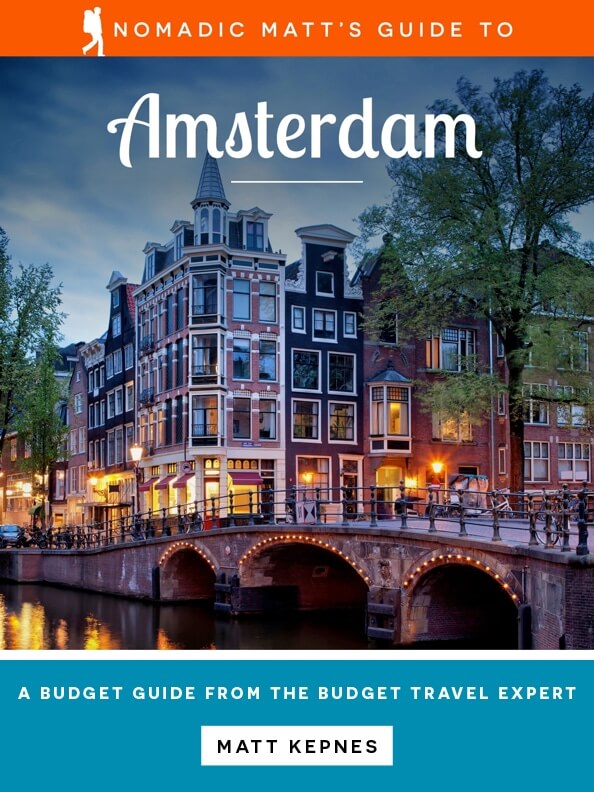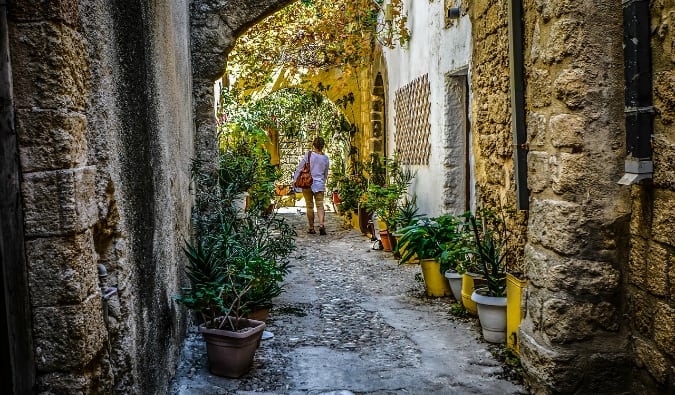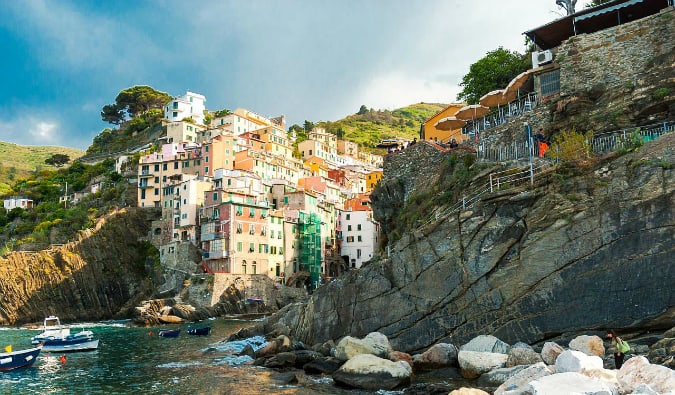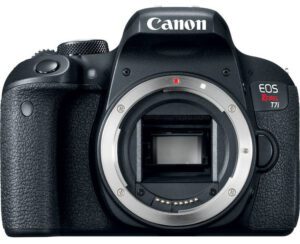
Traveling alone to New Orleans? Is that…a good place to travel solo? Don’t most people go to New Orleans with their partner or a group of friends, at the very least? Well, sure, but that doesn’t mean you shouldn’t go!
A lot of US cities are perpetually recommended to solo female travelers. San Francisco? You’ll have the time of your life! Washington DC? A fabulous choice, especially for intellectuals, and you’ll wish you had time to do everything. New York City? Perhaps the best choice of all, and I wrote the ultimate guide to solo travel in New York.
But New Orleans? You almost never hear it recommended to solo female travelers. Why is that?
I see two main reasons. The first is that many people consider New Orleans first and foremost a party destination, and the second is that some people think New Orleans can be a dangerous place.
These are both patently false.

I love traveling alone in New Orleans.
My favorite thing to do when I travel is to just hang out and let the city get under my skin. Rather than running from attraction to attraction, I like to hang out, absorb, fly under the radar, live as I would if I lived there, take photos of cool things, eat lots of excellent food, and drink lots of excellent coffee.
New Orleans is the perfect city for that. I think it’s the most unique city in America, and it absolutely has the best food culture in America. On my past few trips I’ve tried to have every single New Orleans specialty, from crawfish and gumbo to red beans and rice and bananas foster!
The people here are friendly, warm, and welcoming. In just a few minutes you feel like you’re a part of their family. And if you need help, they’ll bend over backwards to give you anything you need. As someone who grew up in the chilly northeast, this is very different from home and I grew to appreciate and value it!
And if you’re looking to shop, you’ll find plenty of souvenirs. New Orleans has a strong arts scene and whether you’re looking for an affordable print or a pricey original piece of artwork, you’ll be able to find beautiful items everywhere. And then there are the food souvenirs. I am honestly kicking myself for not bringing home Café du Monde coffee and the olive and pickled onion spread that they put on muffulettas.
New Orleans fills my stomach with butterflies in the best way. It’s equally exciting and reassuring. Any day that starts in New Orleans — preferably with a plate of beignets and some chicory coffee — is going to be an adventure and a half!
The best part is that I’m not the only one who feels this way. Plenty of my friends who love to travel solo consider New Orleans one of their favorite US destinations.
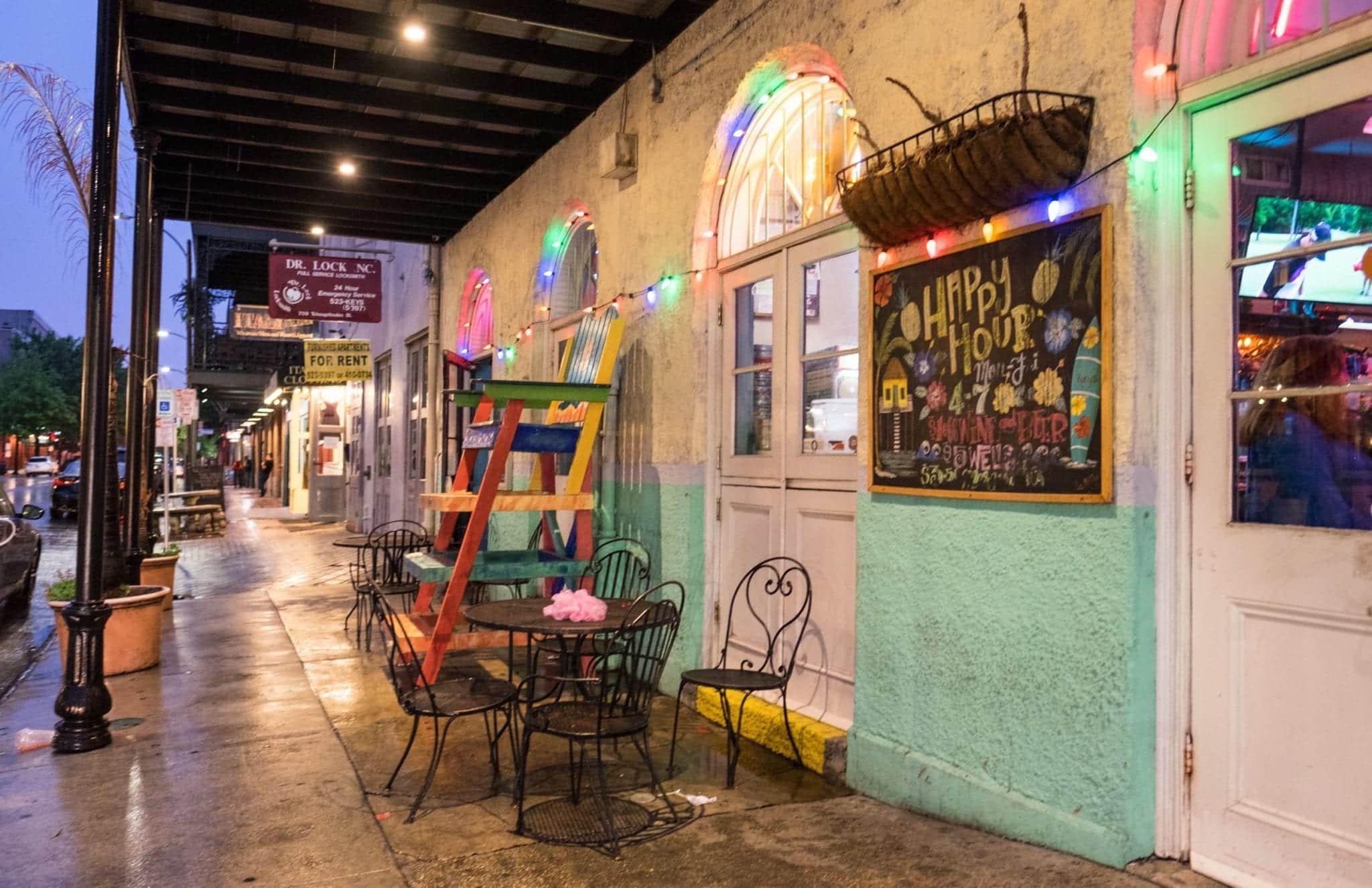

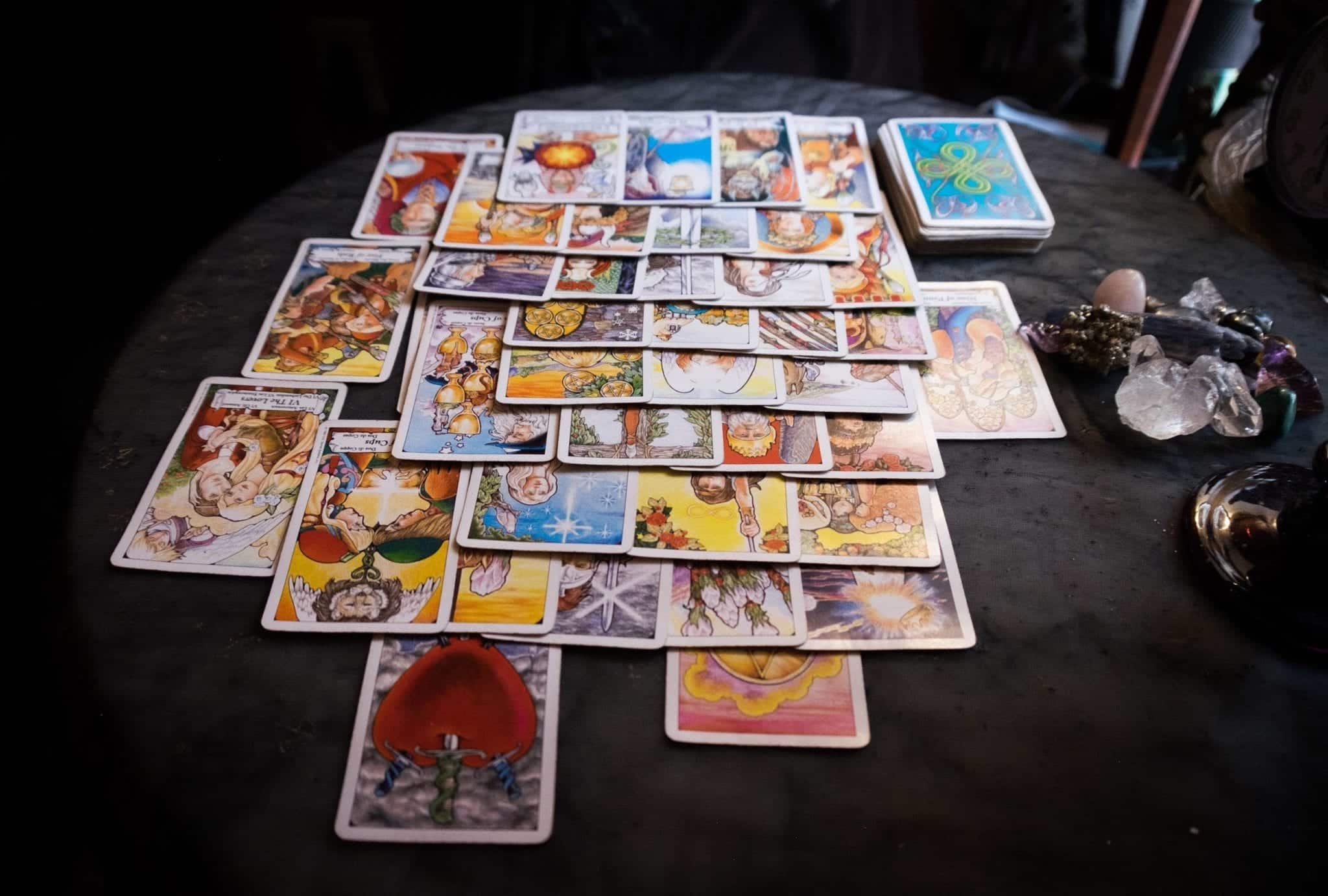
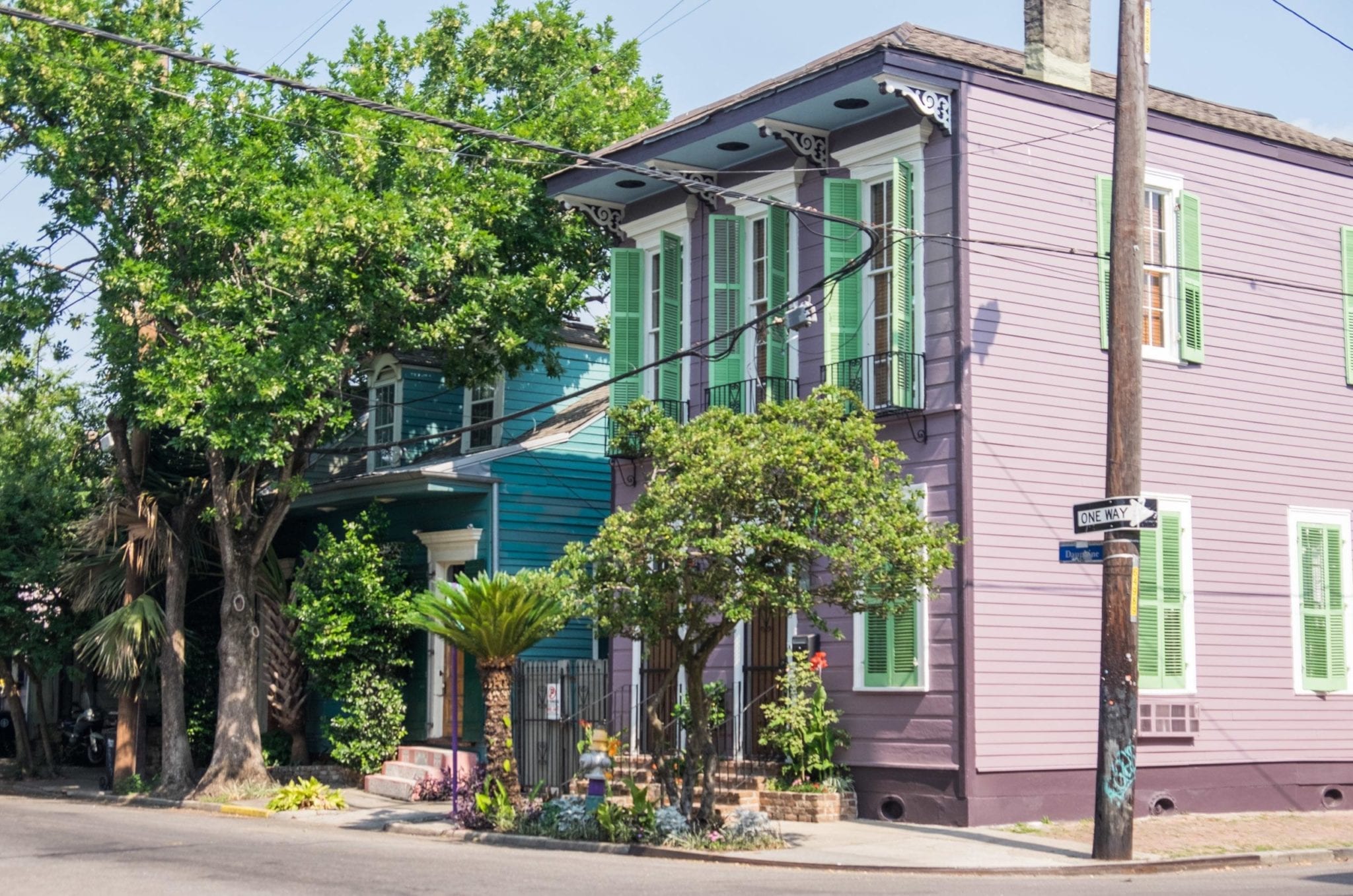
New Orleans is WAY MORE than partying.
While New Orleans may be most famous for its party culture, my two favorite things about New Orleans are the food and the live music. Both are abundant; in fact, on my first visit, I remember thinking that New Orleans would be the perfect destination for a blind traveler. You don’t need to see it to experience it to the fullest.
Here are some of my favorite things to do in New Orleans that have nothing to do with partying:
Try the famous beignets are figure out which ones are your favorites. These sugar-dusted donuts are so decadent, but the perfect way to begin a day in New Orleans. Café du Monde is world famous, but Café Beignet has a lot of fans too. Personally, I think the Café Beignet’s beignets are slightly better, but Café du Monde has better coffee and a better atmosphere. You need to go to both!
Find a live music act on the street and hang out and listen for awhile. Lots of acts perform in the French Quarter, from brass bands to solo jazz musicians. If you stop and listen to some musicians for a bit, and especially if you record them, be sure to leave a tip.
Eat, eat, eat all the fabulous Creole and Cajun cuisine. I’ll be writing more about New Orleans food in depth, but here are a few of my favorites: Meril (get the tuna wraps), Arnaud’s (get the bananas foster), Jacques-Imo’s (get the alligator cheesecake), Mother’s (get the Ferdi Special), Commander’s Palace (get the bread pudding), Willa Jean (get the barbecue shrimp and burrata toast), Coop’s (you can’t go wrong with anything local), Seaworthy (get the Murder Point oysters), and Central Grocery (get the full-sized muffuletta for your plane ride home and the next three meals).
Dive into the spiritual culture. I loved my tarot card reading at Hex on Decatur Street; you can also get your palm read, visit a psychic, or learn about local traditions like voodoo.
Explore the architecture in different neighborhoods. My favorite neighborhood for architecture is Faubourg Marigny. I went on a Faubourg Marigny architecture tour with Welcome New Orleans Tours. My guide Sheila took me all over the neighborhood, showed me gorgeous buildings, taught me about the quirky architecture styles, and even gamely served as my photographer. They also do French Quarter and Garden District tours.
Spend an evening on Frenchman Street listening to all kinds of live music. This is my personal favorite place to spend an evening in New Orleans. Walk down the street, listen to the open venues, and grab a seat and listen to music, swaying back and forth in your own world.
Visit some excellent museums. The National World War II Museum is excellent; a quirky option is the Pharmacy Museum.
Dress up in your best duds and have a fancy meal at Commander’s Palace. This place is old school in the best of ways. People dress up quite a bit, there are a million servers (and everyone at a table gets their plates delivered simultaneously), and they even switch out your water glasses when the ice melts a bit. They’re famous for their turtle soup and bread pudding, but everything is fabulous.
Explore the shops and galleries on Royal Street. This is my favorite street in New Orleans and it’s in the heart of the French Quarter. You’ll find everything from fancy art galleries to stylish clothing boutiques to outlandish lamp stores. Definitely make sure you browse this street for souvenirs.
Browse unusual markets for one-of-a-kind wares. Magazine Street in the Garden District is home to some cool vintage stores. I actually found New Kids on the Block dolls from the 90s! Another great spot is the Art Garage, which is open at night on Frenchman St.
Gawk at the gorgeous homes in the Garden District. This is where you find the big, glorious Southern mansions.
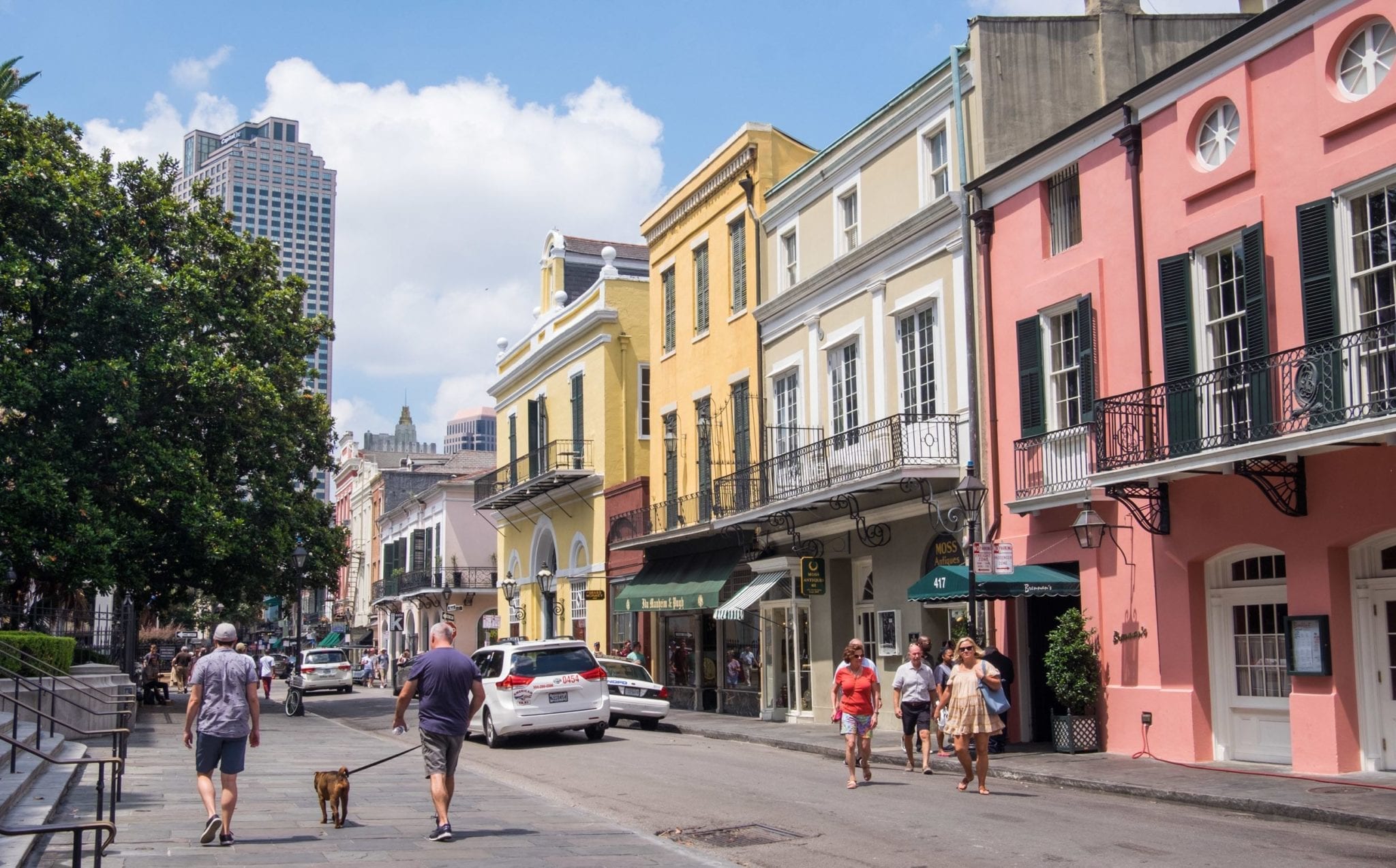
95% of staying safe in New Orleans is being careful of how much you drink.
A lot of people get wrapped up in the wrong things when it comes to safety in New Orleans. They hone in on New Orleans’s murder rate, which is higher than many other cities’ murder rates, or movies and TV shows in New Orleans that focus on crime, or images on the news of looting and panic during Katrina, or opinions from well-meaning loved ones who aren’t knowledgeable about New Orleans. This is all grossly misguided.
Focusing on a city’s murder rate is an unrealistic way to evaluate a travel destination’s safety, especially a city like New Orleans. Like any other city in the world, tourists are not the target of murderers. Most violent crimes are related to domestic violence or gang activity, and they take place nowhere near where tourists go. If tourists were being picked off, nobody would come to New Orleans, or New York, or Washington DC.
TV shows and movies about crime in New Orleans are just that — fiction. They don’t represent New Orleans any more than Law & Order represents New York, or Murder, She Wrote represents that little town in Maine where people keep getting murdered.
Hurricane Katrina was an exceptional catastrophe and its aftermath does not represent life in New Orleans today. On the slim chance that you end up in New Orleans during a major storm, follow the local alerts and do what they tell you. Don’t stick around if the governor is ordering you to evacuate.
As for well-meaning loved ones who have no idea what they’re talking about, I refer you to this post on considering the source. Take advice from people who are familiar with New Orleans, have been recently, and travel in your style. Not people who only know about New Orleans from cable news.
If you come to New Orleans, the best way to stay safe as a solo female traveler is to use the same common sense you would use in any other city. Guard your belongings and only take what you need with you each day, locking up your belongings in your hotel room. Don’t trust strangers too quickly. Spend money on things that keep you safe, like a hotel in a better neighborhood or a taxi home instead of walking. Keep in touch with a friend or family member at home.
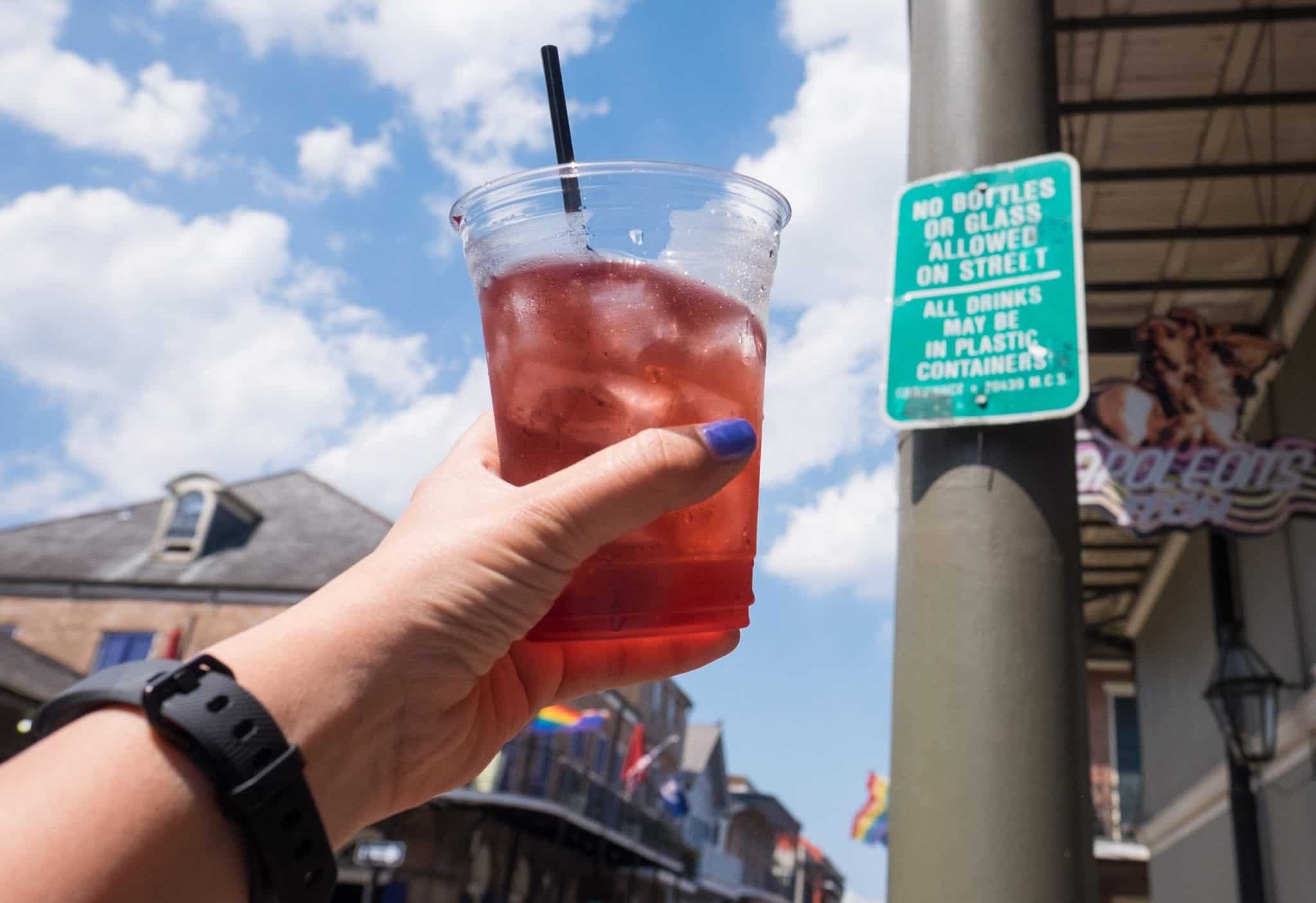
HOWEVER. New Orleans is a city with a strong drinking culture, and many travelers come here to drink excessively. Cocktails are strong (and enormous); you can drink on the street if it’s in a plastic container, and Bourbon St. is packed with bars. For that reason, many travelers who come to New Orleans drink to a level that leaves them unsafe.
Drinking excessively leaves you vulnerable. When you lose control of your actions, you become vulnerable to robbery, petty crime, deception, and sexual assault. I want to be clear that if someone robs you or assaults you, it’s not your fault — but staying sober is the best way to protect yourself from things like this happening.
When you hear about bad things happening to travelers in New Orleans, the stories almost always start with I was drunk. I was drunk and my phone got stolen. I was drunk and I tripped and smashed my face into the sidewalk. I was drunk and left my purse in the bar. I was drunk and I went home with this person I really didn’t want to get home with. I was drunk and I don’t remember what happened last night.
For this reason, I urge you not to drink too much when traveling solo in New Orleans. This is the best way to keep yourself safe. Here are some ways to do so:
You know your own drinking tolerance, but I recommend capping your night at two drinks maximum. Keep in mind that a single serving of wine is 5 oz., but many establishments serve larger than 5 oz. servings. Also keep in mind that cocktails like the Sazérac, the official cocktail of New Orleans, are made almost entirely of hard liquor and are more concentrated than, say, a gin and tonic.
Keep an eye on your drink. Only take drinks from the bartender and don’t let them out of your sight.
If you don’t feel comfortable walking back to your accommodation, take an Uber or Lyft. It’s super-easy and convenient. There are also taxis and you can call for a pickup.
If you don’t want to drink, don’t drink. New Orleans locals don’t care. Your waiter will not sigh at your order of sparkling water with lime; your bartender will happily serve you a Shirley Temple. Honestly, the only people who will give you crap about not drinking are the drunk bros on Bourbon St., and who cares what they think? I only drank on two of my four days in New Orleans and it made zero impact on my enjoyment of the city.

How to Drink and Party Safely in New Orleans
If you want to laisser les bons temps rouler and enjoy New Orleans’s infamous party culture as a solo female traveler, there are ways to do so without compromising your safety. Here is what I recommend:
Go on a cocktail tour. I went on a food and cocktail tour with Doctor Gumbo Tours and had a great time trying lots of specialties of New Orleans and experiencing the cocktails in a group so I wasn’t drinking alone. Doctor Gumbo also has a food-only tour and a cocktail-only tour.
Keep in mind that four cocktails are served on the cocktail tours, which can be a lot of alcohol in a short time period, especially for a woman — but you don’t have to finish all of them. I sipped two and finished two.
I was the only person on the tour who wasn’t part of a couple, but it was only weird for the first few minutes — soon, people were introducing themselves to each other and we all got along terrifically. In fact, one of my readers and the mother of one of my readers were on that same tour!
Join a festival. And not necessarily Mardi Gras or Jazz Fest, the two most famous events in town. New Orleans actually has more than 130 festivals throughout the year (!!), and the best part of them is that they’re primarily for locals and people in the know. You can see a list of festivals here.
On my recent trip I attended the Bayou Boogaloo, a music festival on the water, which takes place every May. Tons of different bands perform and there booths featuring local art all over the place — but best of all is the action on the bayou (which is not in the middle of a swamp, like I pictured, but more like a canal in the heart of the city). People bring giant floats (you can also rent kayaks) and spend the day out on the water, having drinks and enjoying the music!
What I love about small festivals is that New Orleans locals are so friendly — they’ll make conversation with you, invite you to hang out with them, and they won’t make you feel weird about being alone. Side benefit: the Bourbon St. party crowd tends to stay away from events like these.
Connect with locals in advance, then meet up when you arrive. My tips? Check out the New Orleans Couchsurfing group for meetups, events, and people up for hanging out; check out New Orleans Meetup for gatherings and events you can join, and put on feelers on social media, asking your friends if they know anyone who lives there, and seeing if they want to meet up for a coffee or a drink.
Go out and drink — in moderation. You can absolutely hit the bars; just go slowly. I recommend sticking to two alcoholic drinks in one night, then switching to nonalcoholic drinks afterward.
I also recommend going to to quieter bars where the focus is on enjoying cocktails or listening to music, not crazy bars where the goal is getting drunk. One place I enjoyed on this trip was the Jazz Playhouse at the Royal Sonesta, which is an oasis of calm in the middle of crazy Bourbon St. I enjoyed their French 300 cocktail and listened to an awesome jazz trio play one of my favorites, “Moody’s Mood for Love.”
Most importantly, you don’t have to drink AT ALL if you don’t want to. I have multiple friends who don’t drink whatsoever who love New Orleans.
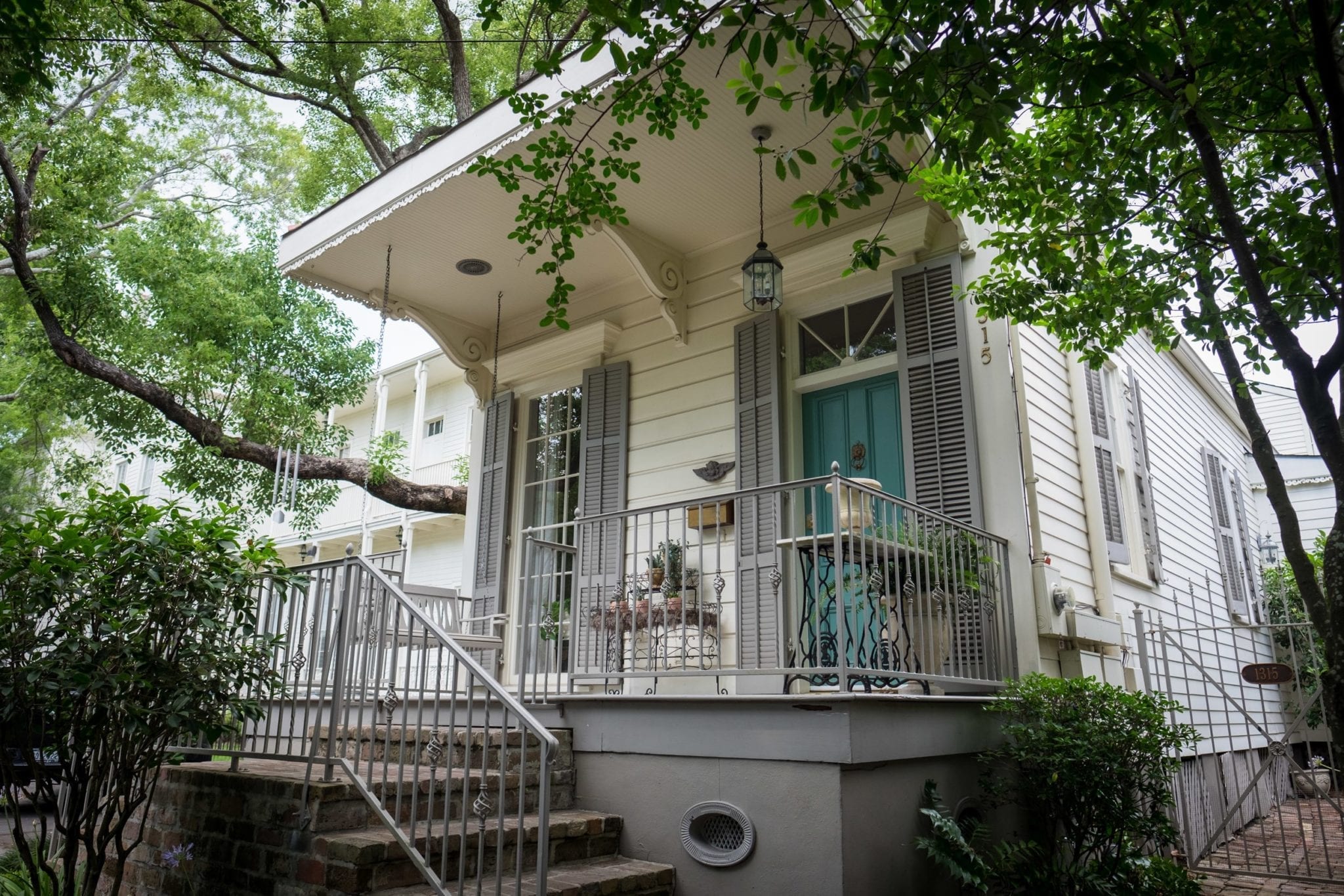
Stay in a Safe Neighborhood in New Orleans
Finding a good hotel in a safe neighborhood is one of the top priorities of solo female travelers, and it’s something I always plan carefully. You want to be in a place that is safe enough to walk around at night, quiet enough to sleep soundly, close to good restaurants, and a short walk or public transit journey from the attractions.
I’ve done two trips to New Orleans and stayed at four different places in four different neighborhoods. (The weirdest was an Airbnb room rental in Mid-City in 2014, where chickens ran down the street, the door didn’t shut properly, and the host had a ton of books by L. Ron Hubbard on display. Yeah, I was a bit broke back then.)
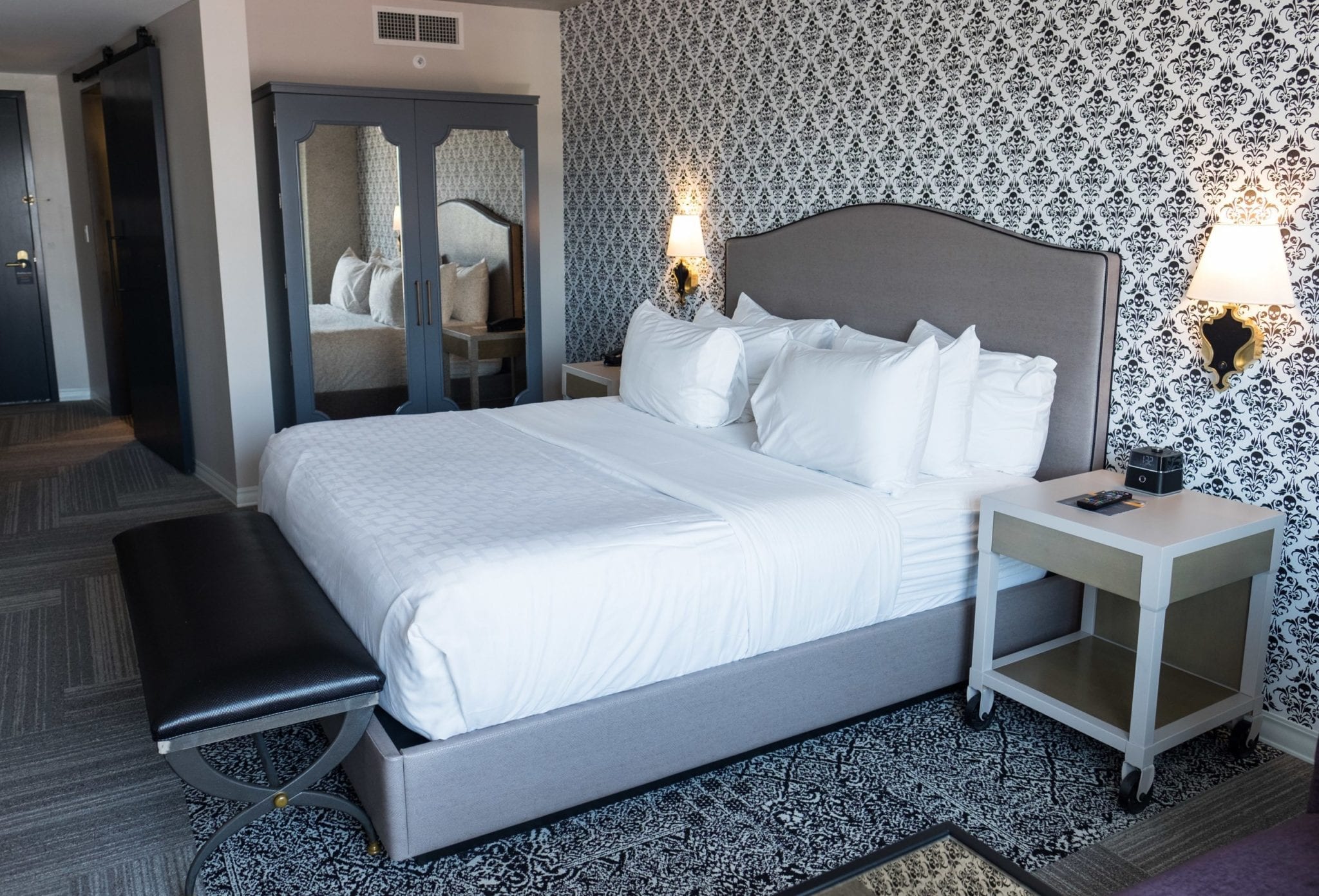
This time I stayed at the Cambria Hotel in the Warehouse Arts District, which opened in 2017, and it was a great experience from beginning to end. I think it’s a particularly good choice for solo female travelers.
I had never been to the Warehouse Arts District before, which is just west of the Central Business District, but it’s now my top recommendation for where to stay in New Orleans, especially for solo female travelers. It has so many awesome and quirky restaurants, yet it’s far away enough from the noise and craziness of the French Quarter. And best of all, it’s a good distance from the drunk Bourbon St. tourists, who primarily stay in the French Quarter and the Central Business District.
From a solo female travel perspective, I appreciated that it was on a very busy corner where people are always out and about. Also, they’re in the process of making the elevators require hotel keys. Both of these things ensure safety.

I also appreciated the wild, colorful, pseudo-industrial decor! There is this awesome damask/skull wallpaper in all the rooms that was custom designed for them. And in their best suites, they have gorgeous, over-the-top portraits of New Orleans locals: Lil Wayne, Harry Connick Jr., Ellen DeGeneres, and Sandra Bullock! (Though part of me thought, “Where is Richard Simmons?!”)
The hotel has two entrances — on Tchoupitoulas St. and Commerce St. — and right across the street you can find excellent coffee at Revelator Coffee and really good sandwiches and salads at St. James Cheese Company. A short walk away are some of my favorite restaurants in New Orleans: Meril, Willa Jean, Seaworthy, and Mother’s. The French Quarter is a safe 10-minute walk away.
There was one amenity I wished they had — room service. (It would have been nice to order some food while watching the Royal Wedding at 6:00 AM.) That said, if you’re hungry, you can get breakfast or dinner at the hotel, or grab something across the street.
After speaking with several New Orleans locals, I advise you against booking an Airbnb rental. Like many cities, New Orleans has created laws around Airbnb rentals to protect locals and guests; like many cities, these laws are not enforced adequately. You can read New Orleans’s short-term rentals law and see a directory of law-abiding rentals here.
Airbnb rentals that follow the law need to apply for a permit from the city and display the permit in one of their windows. Legal rentals will be listed on this site, which is updated daily. If they’re not listed, or they don’t have the permit in the window, they’re an illegal rental.
However, the safest option is to stay in a hotel. While I’ve stayed in a lot of Airbnb rentals over the years, I hardly ever do anymore and prefer hotels for their 24-hour reception and security. New Orleans has so many excellent and affordable hotels that there’s no reason not to stay in one. See more hotels in New Orleans here.
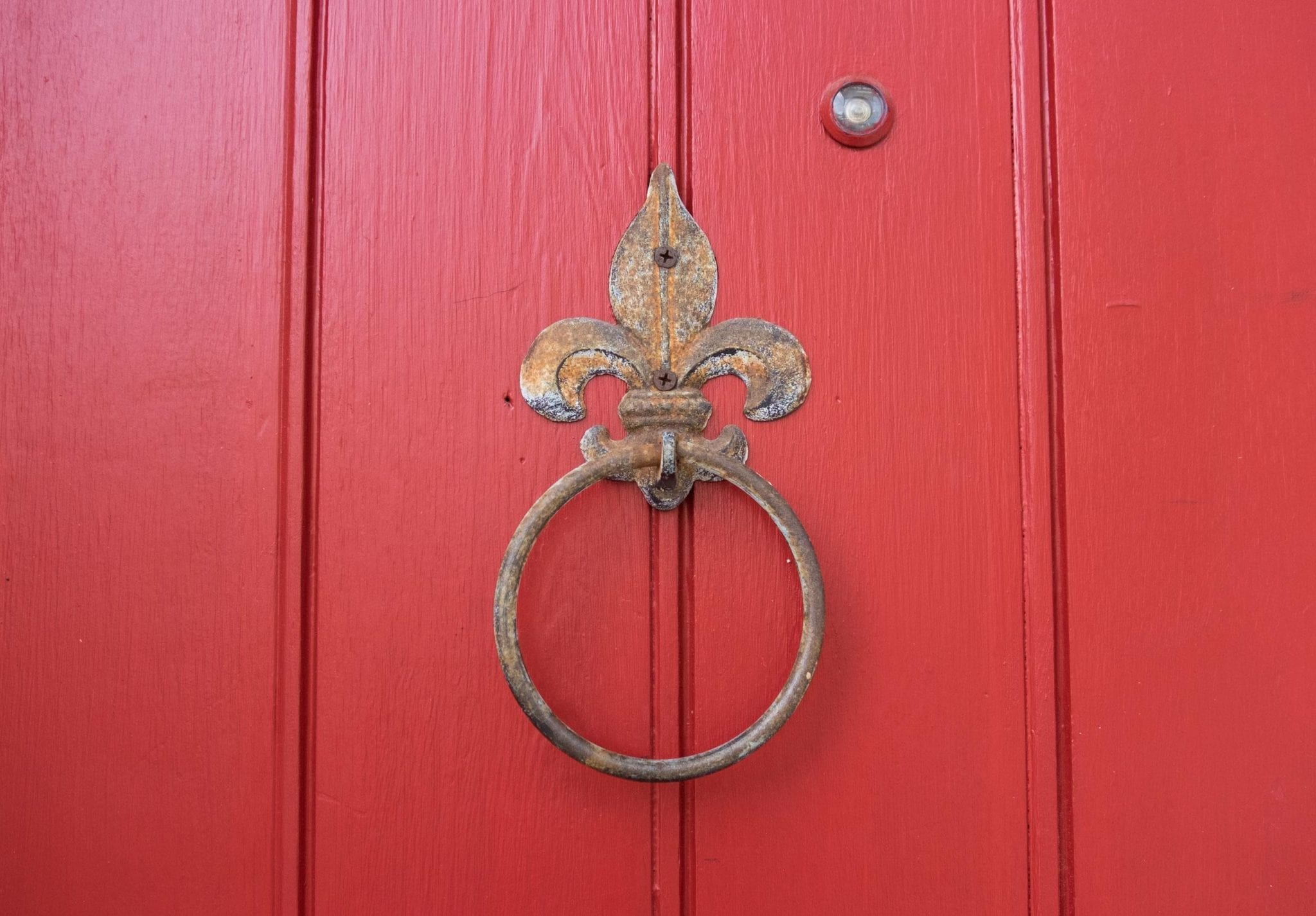
A Few More Solo Female Travel Tips for New Orleans
Bring more bras than you think you need. This is gross, but my underboob sweat hit UNREAL levels in New Orleans. You can’t get away with wearing a bra multiple days in Louisiana! If you don’t have enough bras, bring travel laundry soap and wash a few in the sink halfway through your trip.
Hydrate like crazy. Louisiana is famously humid, and can get very hot depending on the time of year. (I had days in the 90s, or the 30s in Celsius, in mid-May; my Mardi Gras trip in February 2014 was cold enough for a light sweater during the day and a jacket at night.) Hydrate often — before you feel like you need to. Sometimes I would suddenly feel dizzy and then realized I hadn’t been drinking enough water.
Plan for rain, even if the forecast doesn’t say it’s going to rain. Did you know that Louisiana is the rainiest state in the contiguous US? New Orleans gets twice the rain of Seattle and three times the rain of London. I made a big mistake when I didn’t bring an umbrella one day and got caught out in a massive downpour! It can sneak up on you.
Get travel insurance. If your flight is cancelled due to storms or flooding (a realistic possibility), travel insurance will help you in your time of need and recoup your losses. Same thing if you trip and break a bone and need to go to the hospital, or if your wallet gets stolen. I use and recommend World Nomads for trips to New Orleans.
READ NEXT:
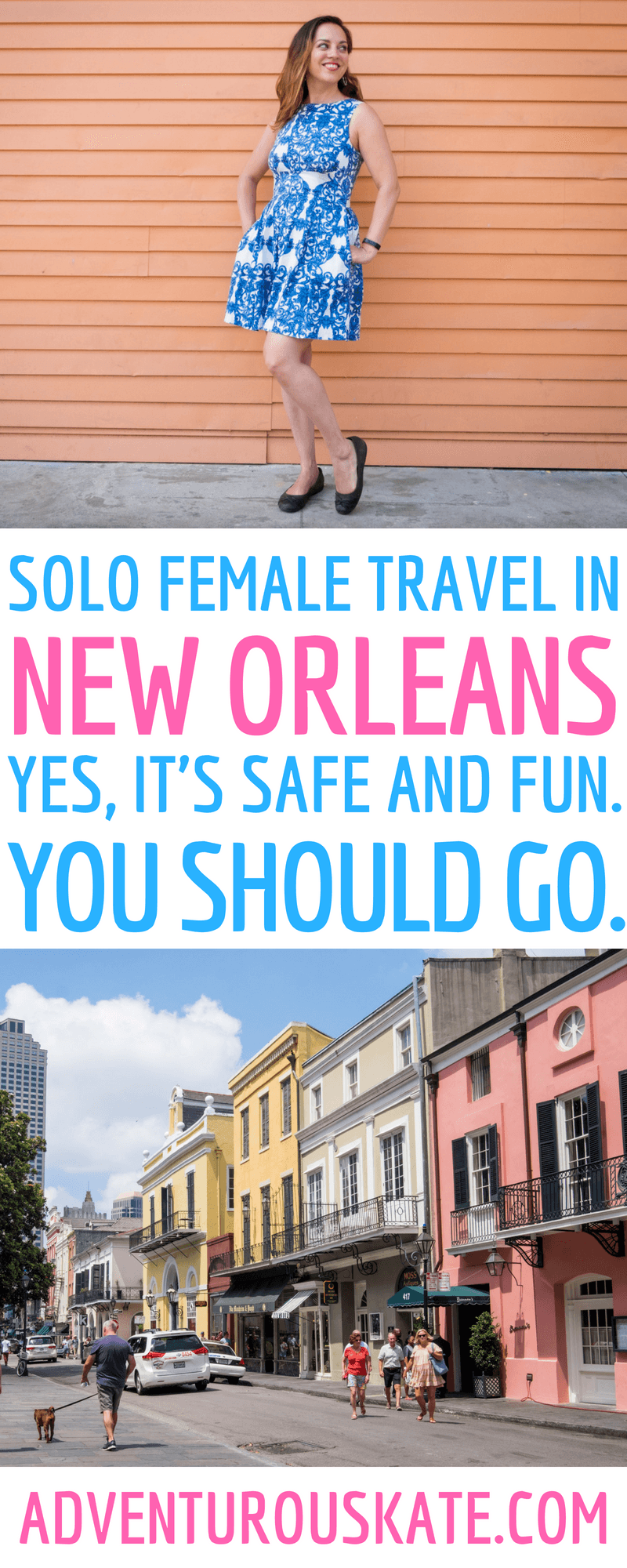
Essential Info: In New Orleans I stayed at the Cambria Hotel, which I highly recommend. The hotel is beautiful, safe, and in the excellent Warehouse Arts District, which is now my preferred neighborhood to stay in New Orleans. Rates from $170. Check rates on hotels in New Orleans here.
I very much enjoyed my Doctor Gumbo Food and Cocktail Tour. It’s technically a combination of their food and cocktail tours and includes a ton of food and drinks. It costs $120 per person.
I loved my Faubourg Marigny architecture tour with Welcome New Orleans Tours. I learned so much and it was a great way to get photos of architecture details in New Orleans. It costs $30 per person. Private tours are also available.
The Bayou Boogaloo is a fabulously fun music festival taking place each May. It’s free to attend, though they request a $10 donation to protect the bayou.
This campaign is brought to you by New Orleans and Co. Their support included covering my 2018 trip in full, including meals, activities, transportation, and flights from New York. I paid for incidentals and some food and drinks. All opinions, as always, are my own.
The post Solo Female Travel in New Orleans: How to Stay Safe and Have Fun! appeared first on Adventurous Kate.

from Adventurous Kate https://www.adventurouskate.com/solo-female-travel-new-orleans-safety/




